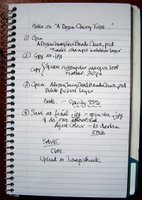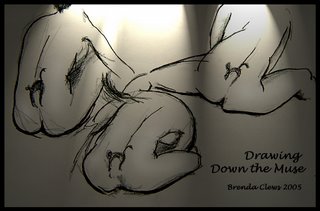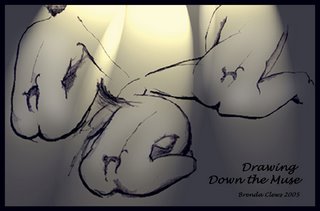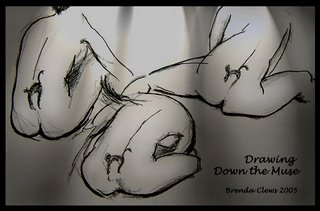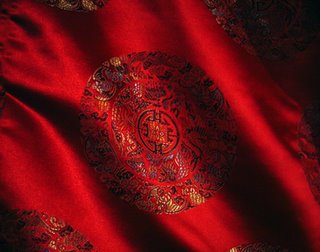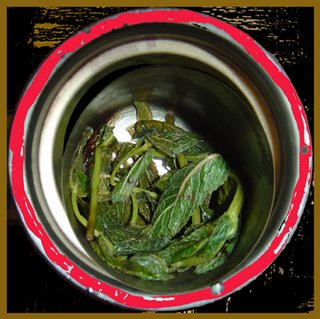
On a gorgeous Spring day, why would I post a photograph that's on this side of 'abject'? Something slightly unsavoury, that you draw back from? Perhaps I am in minor rebellion, posting an image of wilted flowers amidst the massive blossoming of flowers in the blogosphere, and now of used mint leaves, drenched, bleached-of-flavour and colour. They hardly look appetizing. I could have asked you to guess what it was. But didn't. Instead I'm going to share some of my process in creating an image.
Barely a meat eater, I do need some meat now and then and bought some lamb chops from a local butcher. He brought out an entire diaphram of ribs, which caught me in surprise, standing behind the counter watching, feeling the size of the lamb whose life had been cast for this. I silently thanked the lamb. After he wrapped six thin chops in brown paper and I purchased them I ambled to a small grocery store. My daughter's been on a vegetable and fruit diet, and I, too, have been enjoying more fresh produce. I buy strawberries, green grapes, green beans, granny smith apples, baby carrots, red pepper, eggplant, cauliflower, broccoli, and, just as I'm paying, grab a bag of fresh mint. At home the mint gets washed thoroughly and, except for a few sprigs, chopped finely, put in a small glass jar, vinegar and sugar and salt added. It will be the condiment for the lamb dinner I'll have the next day.
The remaining mint leaves are plunged into a half-litre thermos mug of boiling water, a lid screwed tightly on, and left for perhaps an hour. A little sugar, and the cup of mint tea is delicious.
Why did I photograph the remnants? My dog happily ate the bones from the lamb, a rare treat. I didn't photograph that. Instead I offer a sense of decay, a whiff, of something used, that you can't quite figure out in the photograph, but which I'm telling you about so you know.
Of the three photographs, I used two. One had a better rim, the other a more focussed view of the drenched, bleached-of-flavour mint. I use a marque tool to cut out the leaves from one photograph and transposed them to the other, laying them overtop of the less-in-focus wilted leaves. Then I used the rectangular marque tool to stretch the layer forwards, so that the leaves are longer vertically than in the original image, and don't quite fit into the rim of the cup. They are almost spilling out, but not naturally, it's a deliberate imposition, a photographic decision. Then I used the selection brush tool and drew a crude line around the rim of the mug, which was too bright since I'd used a flash, and bothered me. I set the foreground colour to a bright red and used the paint bucket tool to fill in the area marked by the brush tool. I set the foreground colour to black and used the paint bucket tool on the area around the cup, thus masking the parquet floor I had put the cup of drenched mint leaves on. Using the foregound colour tool I picked up the brown that was left in the background and set it as background colour and cropped the image slightly larger than the original so that the brown background colour became a border.
It was a beautifully scented and delicious cup of tea, and I enjoyed every sip. The mint imparted its delicate flavour to the boiling water and onto my appreciative taste buds with a lovely aroma. The simplicity of this. And what's in the cup is what was left afterwards, a memory, the leaves laying far away from the sunlight they grew in, the soil that nourished them, having given their minted essence to me, who remembers them in this photograph.
But my photograph is about the abject, what borders on decay, what's used and cast aside to recycle in the natural processes that overtake our refuse. They were shaken into the organic recycling bin, forgotten.

